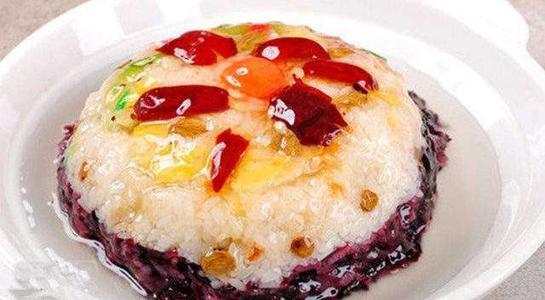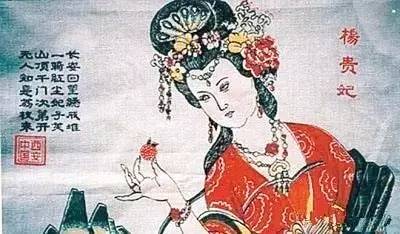Before people had fridges to keep their food for a longer period, or longer in frozen condition, mankind has invented a number of processes to make fresh produce last a little longer. However, if such processes would affect the original flavour too much or make it visually unappetising, the product would be unacceptable. So, food preservation is tightly connected with maintaining the original organoleptic aspects of the original product.
Preserved candied fruits, have been a popular snack in China for ages, known as guofu or mijian. Preserving fruits started as a way to keep summer and autumn fruits into the winter. Originally, candied fruits were treats for the imperial courts. In ancient times, emperors wanted to enjoy fruit all year around, but transportation was too slow to deliver fresh fruit to the capital from the warmer southern regions.

The most telling story about this problem feature the most famous concubine in China’s history: Yang Yuhuan, the favourite concubine of emperor Xuanzong of the Tang dynasty (8th century). The emperor had lychees, that Yang loved so much, delivered to the palace using the imperial courier’s fast horses, whose riders would take shifts day and night in a Pony Express-like manner. This service used to be reserved to sending urgent messages. This angered the courtiers so much, that they persuaded the emperor to have Yang killed.
Smart cooks came up with the idea of soaking fruit in honey to seal it from the air and prevent deterioration. When they consecutively tried to boil the fruit in honey, a new snack was created. As the imperial court in the last two dynasties, Ming (1368–1644) and Qing (1644–1911), were located in Beijing, that city is still considered the best place for tasting a wide range of authentic and traditional preserved fruits.
The process
The main difference between preserved and dried fruit is the use of honey or sugar in the preserving process. Traditionally, preserved fruit are produced by simmering fresh fruit in honey to remove moisture. Sugar is often substituted for honey nowadays to cut production costs. Selecting the best fruit is crucial in making mijian and guofu. The fruit must be ripe but still dense enough to withstand long boiling. Different varieties have specific requirements. Apricots should be golden, with moderate hardness, while apples with low moisture content and loose flesh are best. Once fruit has been pitted and peeled, it is smoked in sulphur to prevent oxidation of the tannin. It is then boiled in a highly concentrated sugar syrup.
Not all candied or preserved fruit is sticky in texture. Though the words guofu and mijian are interchangeable, guofu is more commonly used to describe preserved fruit that is dried after boiling in sugar or honey, while mijian refers to the more juicy and glossy versions that aren’t dried after cooking. Some Chinese guofu have a thin granulated sugar coating, which is more common in southern provinces like Fujian and Guangdong.
Popular types
Yangmeigan, or candied Chinese bayberry, is made by boiling the fresh berries in sugar water, then baking the berries to remove moisture. A sugar coating is added for extra sweetness and texture. This snack is very popular, especially in Yangtze River Delta region.
Guofu and mijian are most commonly made with green plums, apricots and peaches. But the preservation process has also been extended to more unconventional ingredients, like winter gourd, ginger, water chestnuts, lotus roots and olives.
Tangjiangpian, or candied ginger, is a specialty in Changsha, the capital of Hunan Province. The recipe, which originated in the Ming Dynasty, is favoured for its sweet and spicy flavour as well as for the health benefits of ginger. For the process, fresh, tender ginger roots are rinsed, peeled and thinly sliced. Then they are tossed in granulated sugar and dried under a hot sun. The process is repeated several times until all the moisture from the ginger is gone.
The peelings of orange and grapefruit can also be made into candied preserves. The process requires separating the outer zest of the citrus from the bitter white pith. The peeling is then boiled in water and cut into thin slices, which are subsequently boiled in a syrup of equal parts water and sugar. When the peelings take on a transparent appearance, they are removed from the syrup and spread out on a flat surface to cool. Finally, they are rolled in granulated sugar. Tangerine peel is used to make sun-dried chenpi, which is used in traditional Chinese medicine and in cooking (try them when stewing beef!). In Guangdong, jiuzhi chenpi is a snack made by processing the dried tangerine peel with liquorice root and sugar.

Various preserved plums, like huamei, wumei and jiayingzi, and hawthorn berries are the most common varieties of more sour preserved fruit sold in supermarkets and convenience stores. The sourest of the huamei preserved plums is one that looks quite mummified, with white powder on a caramel-coloured surface. Made of green plums, it is infused with the flavour of liquorice, giving it a distinctive saltiness that is said to stimulate salivation.
Wumei, or black preserved plum, is less sour and a bit meatier. It is made from Chinese plums, or Prunus Mume. This variety is also an element of traditional Chinese medicine and a key ingredient in the popular summertime beverage of sour plum juice.
Dried mango; this was the most popular preserved fruit by far sold on the online platform Tmall in 2020.
Health food
A number of fruit popular for preservation is attributed medicinal activity in traditional Chinese medicine (TCM). Good examples are: date, tangerine peel, ginger and black plum (wumei). You can also make herbal tea from several types of preserved fruits, like tangerine peel (chenpi) tea. Preserved fruits can also be enriched with other medicinal ingredients like: dates with ajiao (a gel extracted from donkey skin), or hawthorn with probiotics.

Cooking ingredient
Guofu and mijian are often used in classic dishes such as babaofan, or eight-treasure rice, and zongzi with preserved honey dates as filling. Preserved fruits are also added to oatmeal to create a more interesting breakfast.

Modernisation: low sugar
Of course, anything dripping with sweetness comes under scrutiny in today’s health-conscious world. That’s also true of preserved fruit. In recent years, food scientists have developed production methods that use less sugar. One process uses low pressure injection of gel, e.g., algin. In this way you can use less sugar, while preserving the texture of the final product.
Peter Peverelli is active in and with China since 1975 and regularly travels to the remotest corners of that vast nation. He is a co-author of a major book introducing the cultural drivers behind China’s economic success.

